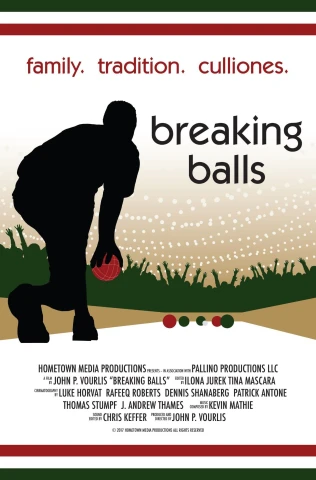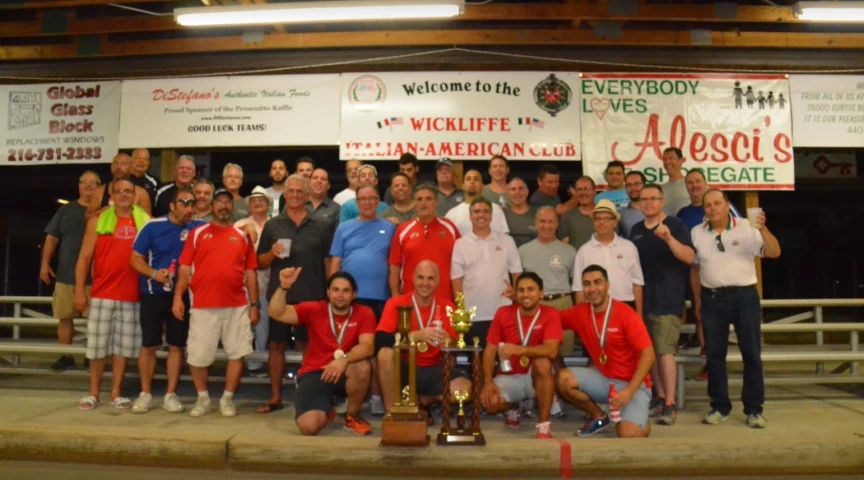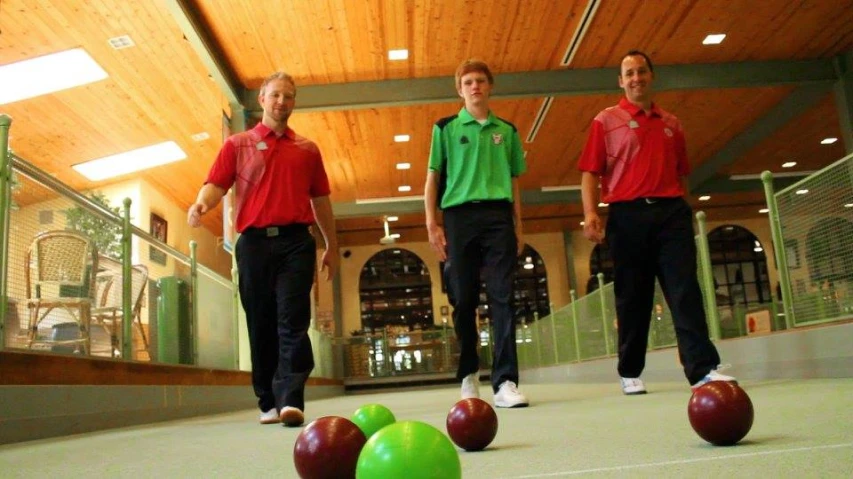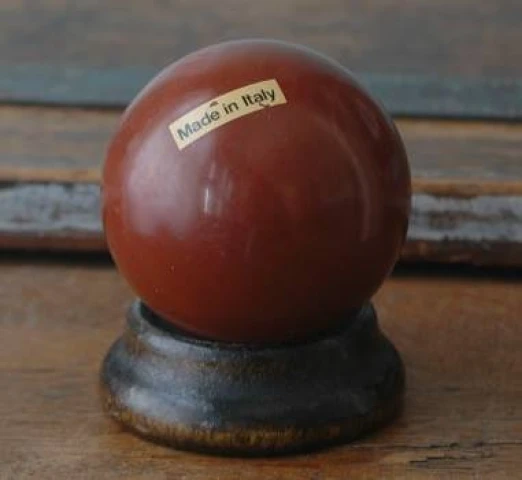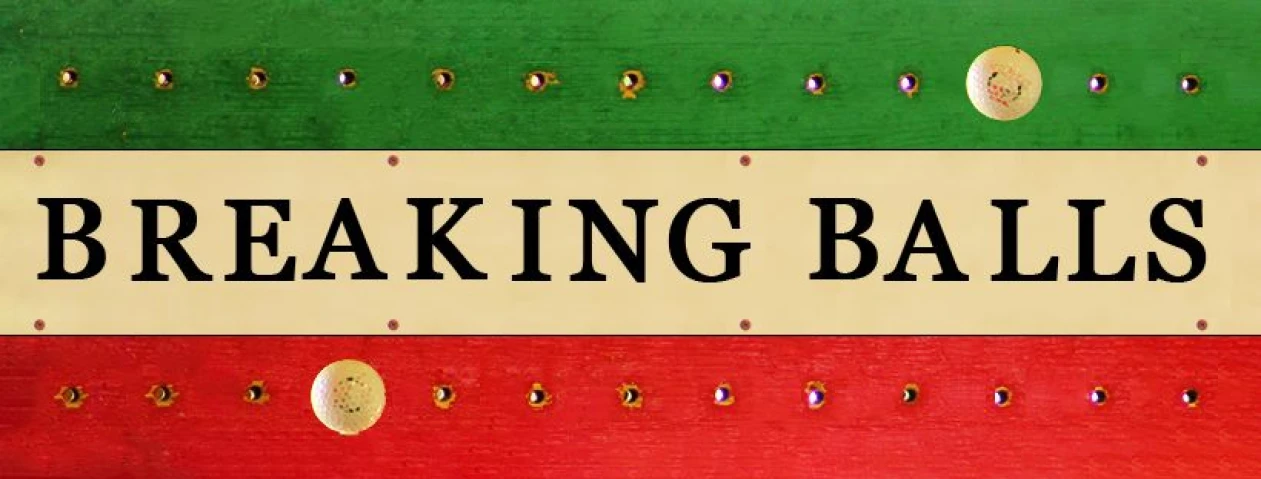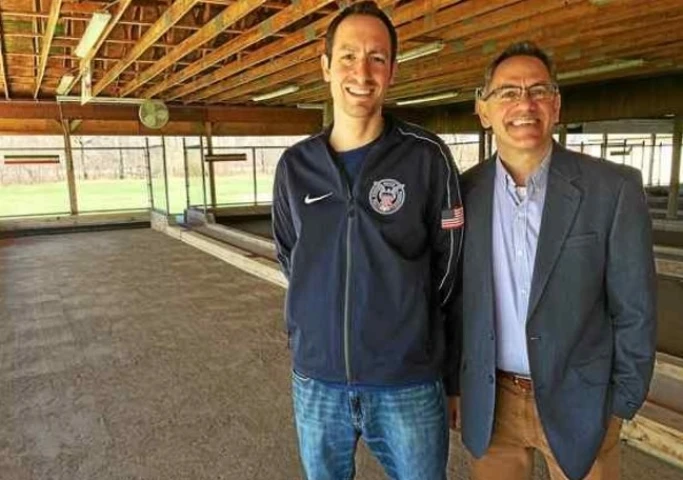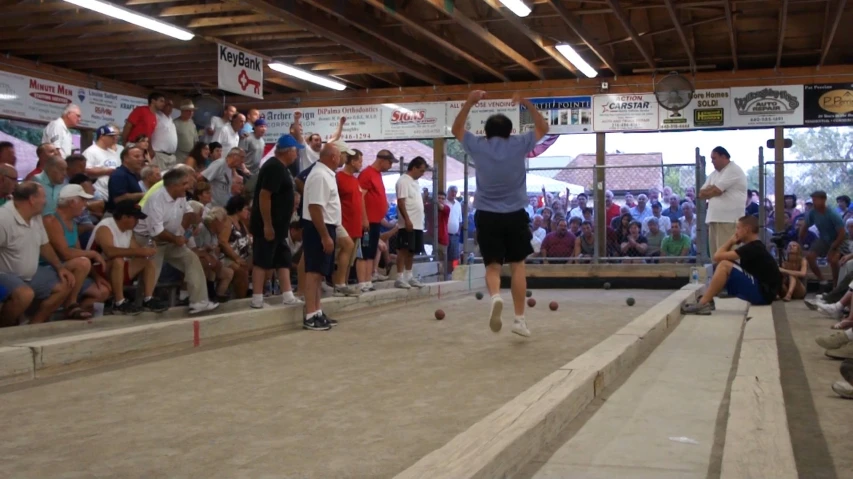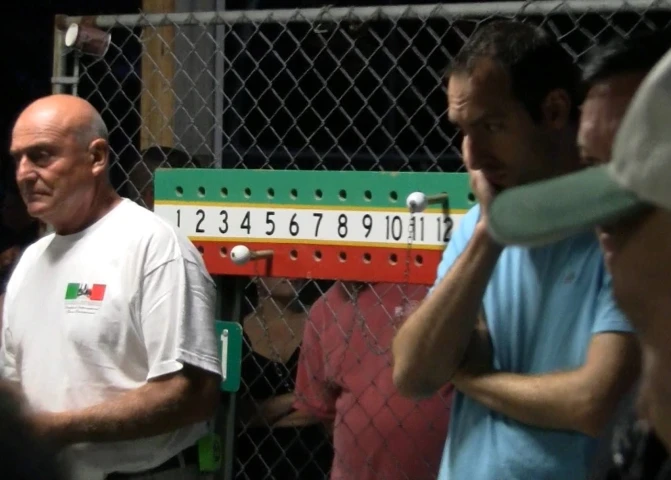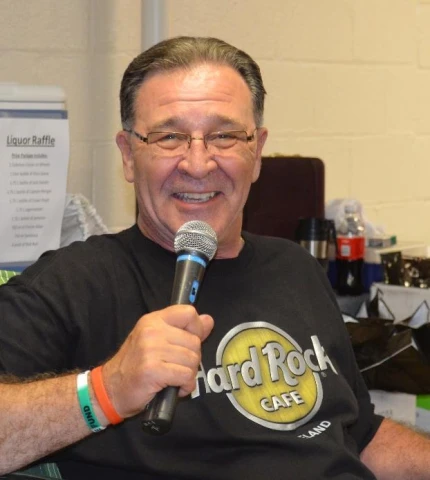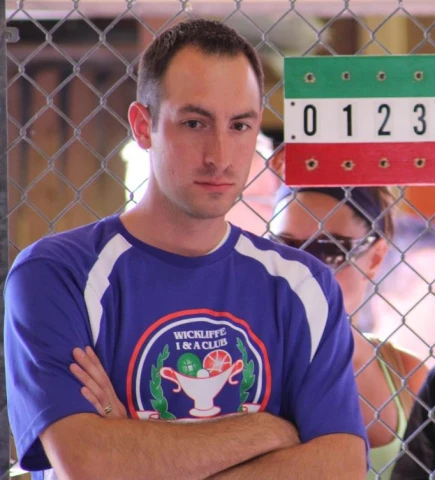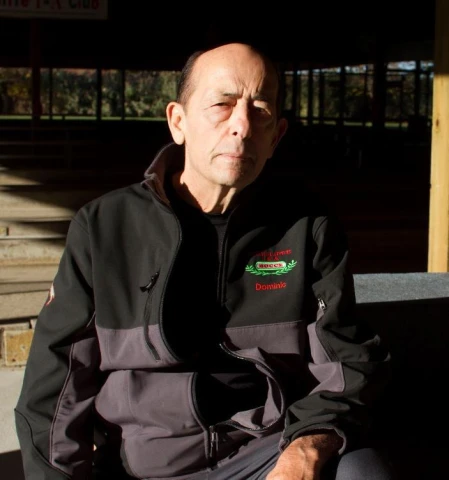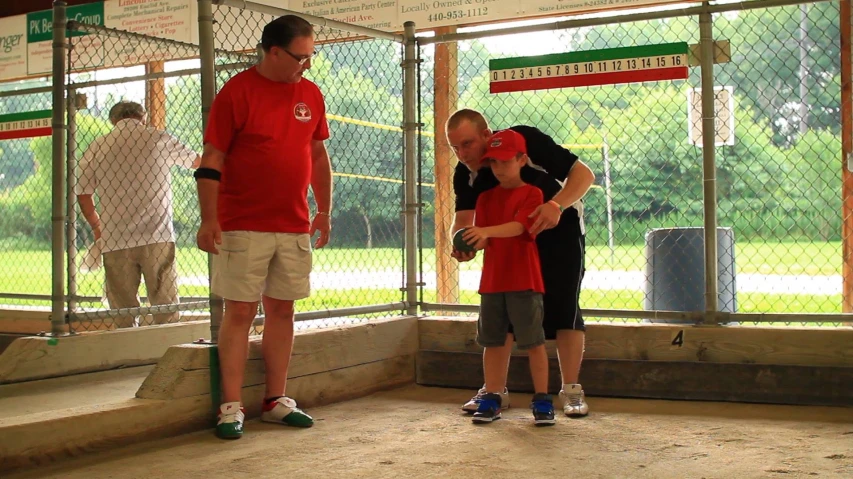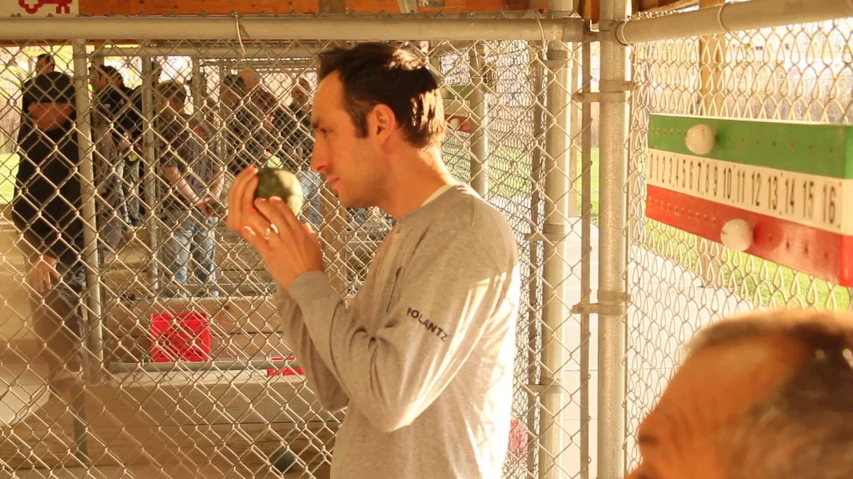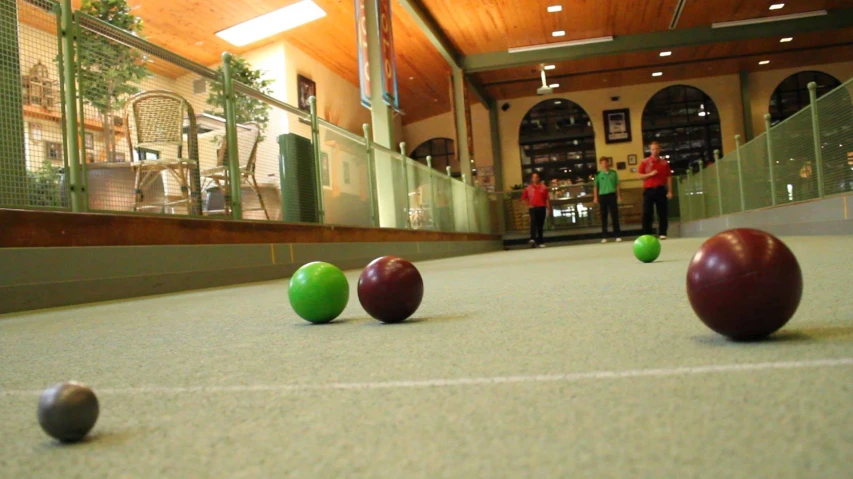Not many Italians who live in Italy know or understand how important Bocce is for the Italian American community. If the breaking news for the Italian Americans is that here in Italy this sport is much less popular among us Italians who live in the boot, the breaking news for us is the extraordinary popularity of Bocce among the Italian Americans.
A new, wonderful documentary by John P. Vourlis, "Breaking Balls", perfectly describes this phenomenon, one of those rare events that see such a huge difference between the Italians who live in Italy and the Italian Americans. I am happy to welcome John here on We the Italians
John, what's your relationship with bocce?
I was born and raised in Wickliffe, OH, and first played bocce when I was a little kid in the backyards at my neighbors the Cirinos, Brochettis and Lorenzos. Wickliffe was and still is full of Italians, and growing up around them, even though I wasn’t Italian (I’m a Greek American), I got to know them and their traditions very well. They were good people. Growing up in Wickliffe in the 70s was like growing up in Mayberry.
I left in 1990 to pursue a career in film, but I came back to Wickliffe in 2010, happily, after spending 20 years in Los Angeles, first studying film at USC Film School, where I got an MFA in Film Production, and then working in the film business. In that summer of 2010, a good friend of mine, Dan Gotti, who I went to school with k-12, asked me if I wanted to go down to the Wickliffe Italian-American Club to watch a bocce tournament. It beat sitting on the couch watching TV, so I said what the heck, why not. I thought I was going to see a bunch of old Italians rolling balls on the grass, but as we drove down to the club, which is only 6 blocks from where I grew up, I saw right away that something was up. We had to park 3 blocks away and traffic for a Friday night in Wickliffe was crazy.
As we walked down the hill to the club, I saw hundreds of people streaming in. When we finally made it in, the place was packed. Music was playing, people were eating and drinking, getting Italian food from local vendor stands, dancing under a covered pavilion to a live band. It was all lit up like a street fair. The whole thing felt like an old-fashioned carnival or church festival. And to top it off there were all these beautiful bocce courts, covered and lit, filled with bocce players competing like this was a March Madness basketball tournament. I was blown away.
I turned to my buddy Dan and said, “This is nuts! What the heck is going on?” He said, “I told you. Bocce.” And I said, “All this? For bocce?” How did I not know about this huge event that was literally right down the street from where I grew up? I started snapping pictures on my old flip phone, and then said the magic words, “Somebody should make a movie about this.”
Flash forward a year. I was trying to put together a feature film to shoot in Cleveland, but the financing was proving a huge challenge. I was getting frustrated. I had just gotten a job as an adjunct film instructor at CSU. I made a short film, but it didn’t satisfy my itch to do something bigger. That’s when I remembered that bocce tournament at the Italian-American Club. I’d never made a documentary before, but I thought I could pull it off, and for much less money than the feature I was trying to fund, so I reached out to some old high school friends, Vince Laurie and Eugene Ciasullo, and asked them if they thought the club might let me follow them around with a camera that summer as they prepared for the next tournament.
They told me to come down to the club and meet the members who ran it, so I did. The first time I saw them, Gino Latessa, Rick & Tony Continenza, and Larry Koval, to name just a few of the guys, they were all dressed in jogging suits, and wearing sunglasses. They looked like they’d walked right out of a Scorsese movie. I was nervous, but within 5 minutes, it was like I was talking to old friends. They agreed to let me film them, and within weeks, I started shooting, using some of my CSU students and former students as crew. It was a long, crazy journey, but almost four years later, we finally have a movie. And we've premiered it at the Cleveland International Film Festival. For a Cleveland boy, born and raised in Wickliffe, I couldn't be happier about that. It's a dream come true.
The film is called "Breaking Balls". I'm very curious, what happens in it?
Breaking Balls is a feature length documentary film that chronicles the game of bocce as seen through the lens of the 30th Anniversary of the Cleveland Challenge Cup of Bocce tournament, one of the largest bocce tournaments in North America, held in Wickliffe, OH, the last weekend of August.
The movie follows three key figures in the lead up to and aftermath of the 30th anniversary of the Cleveland Challenge Cup of Bocce tournament: Gino Latessa, the Tournament Director; Brian Polantz, a world class bocce player from Mayfield, Ohio; and Dominic Olivo, the head groundskeeper at the Wickliffe Italian-American Club.
Gino and dozens of Wickliffe I&A volunteers work tirelessly to put on this huge bocce event which draws upwards of 10,000 spectators and players to Wickliffe every year. 96 four man teams and 14 women’s teams compete annually in the Challenge Cup for $20,000 in prize money, and more importantly, year-long bragging rights as the best bocce players in the Midwest.
Brian played for the United States national team in the 2012 World Bocce Championships in Argentina. We travel with him as he competes in the Midwest summer bocce circuit, playing in the “Triple Crown” events of the World Series of Bocce in Rome, NY; the Cleveland International Bocce Tournament in Mayfield Heights, OH, and the Cleveland Challenge Cup of Bocce in Wickliffe, OH. Brian has won multiple tournaments, including Rome and Mayfield, but he’s never won the Cleveland Challenge Cup of Bocce.
Dominic Olivo, 78, is head groundskeeper of the Wickliffe Italian & American Club, whose outdoor bocce courts are considered some of the finest in North America, if not the world. The Club was founded in 1932 and puts on many social events all year around. The Challenge Cup just happens to be the biggest one. While battling colon cancer, Dominic continues to work tirelessly on his beloved bocce courts, while passing on his knowledge and experience to his young apprentice, Salvatore Continenza. Dominic and his ball busting all-volunteer crew arrive at the courts at 6:30 am and put in two or three hours of work 3 times a week, every week, all season long, from May through August, getting the courts ready for the Challenge Cup, one of the biggest bocce tournaments in North America.
These three storylines all come together at the 30th annual Challenge Cup Tournament, where we learn ultimately that bocce isn’t just a quaint, backyard sport: it’s a unique cultural tradition, a community of players, supporters and fans, who are the soul of this unique sport, nurturing and passing down from one generation to the next their love and appreciation of this special game. They are the heart of this documentary.
Is it true that bocce is the oldest sport in history?
Bocce is an old game whose history goes back to the Greeks and Romans. Today it’s played in various forms mostly along the Mediterranean coast, in Spain, France, Italy, Croatia and Slovenia. In the US and Canada, it’s played mostly by Italian, Croatian and Slovenian immigrants.
Traditionally, you play it on grass or sand courts that are 90 feet long and about 10 feet wide. Nowadays, there are also indoor synthetic courts that let players play all year ‘round. In the old days, bocce balls were carved from wood; today they’re made of metal or most often plastic.
A game can be played between two players, or two teams of two, three, or four players. A match usually starts with the flip of a coin, and the winner gets to throw the small ball, called the pallino by most Italian players, first. You have to place it in a section between mid-court and about 8 feet from the far end of the court.
The side that throws the pallino also gets the chance to roll first. The object is to get your balls closest to the pallino. Once you roll the first ball, the other side gets to roll. From then on, the side that does not have the ball closest to the pallino rolls, until they either get closer or run out of balls. At that point, the other side bowls its remaining balls.
You roll the ball as close as possible to the pallino, which is sometimes called pointing or punto, or you can toss it in the air using an underarm action, sometimes called a volo. A volo shot is generally used to knock either the pallino or another ball away to gain a more favorable position. You can also roll your ball and hit another ball out of the way, and this type of shot is called a raffa shot.
The team with the closest ball to the pallino is the only team that can score points in any frame. The scoring team receives one point for each of their balls that is closer to the pallino than the closest ball of the other team, so you can score up to 4 points in a frame. Games are typically from 7 to 13 points.
Bocce is very very popular among the Italian American community. Why is that?
Bocce is not just a sport, it is a culture - a community of players, supporters and fans - most of whom are Italian American or whose ancestors come from the Adriatic southern coast of Europe. These people are the soul of this unique sport, nurturing and passing down from one generation to the next their appreciation of this unique game. Their love of the sport and the traditions and the camaraderie that surround it are what this movie is all about. They are the heart of this documentary.
The Italians of Wickliffe are a very open, friendly, tight knit, but welcoming group. Most can trace their ancestors to the Campobasso province of Molise, Italy, in the poor, southeast part of the country, where a simple game like bocce is a perfect, and inexpensive way to have fun.
For these Wickliffe Italian Americans, family, culture and tradition are everything, and bocce, which they brought with them from the old country, is a perfect vehicle for nurturing and maintaining these values. The reason it continues to thrive in this area, as the movie discusses, is because the parents and grandparents are passing their love of the game onto their kids, and the kids remarkably are falling in love with the sport, even though it isn’t a mainstream American game.
Is there an interesting or funny anecdote regarding bocce and the Italian Americans you discovered while researching for your movie?
A couple years ago, the club got an email from a guy named Ted Mayfield, inquiring about playing in the tournament. He said he was from Cleveland, Mississippi. The guys thought it was a joke. They thought their friends in Mayfield, Ohio were busting their culliones, so they didn’t reply.
A few days later, they got a call from Ted. He really was from Cleveland, Mississippi, and he had a perfect Southern drawl to prove it. He really did want to bring a team to the tournament. It turns out there’s quite a large Italian American community in the Mississippi Delta region. They came up that summer, and ended up winning the second chance tournament at the Challenge Cup (for teams who get knocked out early). They had such a good time, they now come up every year.
Non molti italiani che vivono in Italia sanno o capiscono quanto il gioco delle bocce sia importante per la comunità italoamericana. Se la notizia per gli italoamericani è che qui in Italia questo sport non è così diffuso, la notizia per noi è la straordinaria popolarità delle bocce tra gli italoamericani.
Un nuovo emeraviglioso documentario di John Vourlis, "Breaking Balls", descriveperfettamente questo fenomeno, uno di quei rari eventi che vedono una cosìgrande differenza tra gli italiani che vivono in Italia e gli italoamericani. Sono felice didare il benvenuto a John qui su We the Italians
John, qual èil tuo rapporto con il gioco delle bocce?
Sono nato ecresciuto a Wickliffe, in Ohio, e giocavo a bocce quando ero un ragazzino neicortili dei miei vicini, le famiglie Cirino, Brochetti e Lorenzo. Wickliffe era eancora oggi è piena di italoamericani ed è cresciuta attorno alla loro comunità,e anche se io non sono italiano (sono greco-americano), ho sono cresciutoconoscendo loro e le loro tradizioni molto bene. Erano bravagente. Crescere a Wickliffe negli anni '70 era come crescere a Mayberry (unacomunità fittizia parte di due fiction televisive americane degli anni '60).
Nel 1990 holasciato la mia città per andare a fare carriera nel mondo del cinema, ma sono felicementetornato a Wickliffe nel 2010, dopo aver passato 20 anni a Los Angeles, prima studiandocinema presso la USC Film School, dove ho ottenuto un master in produzionecinematografica e poi lavorando nel mondo del cinema. In quell'estate del 2010un mio buon amico e vecchio compagno di classe, Dan Gotti, mi ha chiesto sevolevo andare con lui al Wickliffe Italian-American Club per vedere un torneodi bocce. Eracertamente meglio di restare sul divano aguardare la TV, quindi gli ho detto di sì. Mi aspettavo di trovare semplicementealcuni vecchietti italiani tirare palle sull'erba, ma mentre andavamo in giroper il club, che si trova a soli 6 isolati da dove sono cresciuto, ho vistosubito che c'era qualcosa di notevole. Abbiamo dovutoparcheggiare a 3 isolati di distanza e c'era un traffico pazzesco per unvenerdì sera a Wickliffe.
Mentre camminavamogiù per la collina fino al club, ho visto centinaia di persone. Quando siamo finalmentearrivati, il posto era strapieno. C'era musica, molte personestavano mangiando e bevendo, comprando cibo italiano dagli stand dei negozi locali,altre stavano ballando sotto un padiglione coperto mentre suonava una band dalvivo. Era tutto illuminato come una fiera di strada. Sembrava un festivaldi carnevale o una festa come quelle che organizzano le parrocchie italianevecchio stile. E soprattutto, c'erano questi bellissimi campi da bocce, coperti eilluminati, pieni di giocatori di bocce he si sfidavano accanitamente. Sonorimasto a bocca aperta.
Mi sonorivolto al mio amico Dan e ho detto: "E' incredibile! Che diavolosta succedendo?" Mi rispose:" Te l'ho detto. Bocce". Eio gli ho detto:" Tutto questo per le bocce?" Come potevo non saperenulla di questo enorme evento che accadeva vicino a dove ero cresciuto? Ho iniziato ascattare foto col mio vecchio telefono e poi ho detto le parole magiche:"Qualcuno dovrebbe farci un film".
La storia sisposta poi avanti di un anno. Stavo cercando di mettere insieme un film da girarea Cleveland, ma trovare un finanziamento si stava dimostrando molto difficile. Era frustrante. Avevo appenaottenuto un incarico come professore aggiunto di cinema presso la Cleveland StateUniversity. Avevogirato un cortometraggio, ma non erosoddisfatto, volevo fare qualcosa di più grande. E' stato allora che mi sonoricordato del torneo di bocce all'Italian-American Club. Non avevo maifatto un documentario prima, ma ho pensato di poterci riuscire, e che sarebbecostato molto meno rispetto al progetto che stavo facendo fatica a finanziare.Quindi ho chiamato alcuni vecchi amici della scuola superiore, Vince Laurie eEugene Ciasullo, e ho chiesto oro se pensavano che il club mi avrebbe permessodi seguirli con una telecamera quella estate, mentre si preparavano per iltorneo successivo.
Mi hanno dettodi venire al club e di incontrare i membri che lo gestiscono, e così ho fatto. La prima voltache li ho visti, Gino Latessa, Rick & Tony Continenza e Larry Koval, percitare solo alcuni di loro, erano tutti in tuta e indossavano occhiali da sole. Sembravanousciti da un film di Scorsese. Ero nervoso, ma dopo 5 minuti era come se stessi parlando con dei vecchiamici. Hanno deciso di permettermi di riprenderli, e in poche settimaneho iniziato a girare, utilizzando come collaboratori alcuni dei miei studenti edex studenti alla CSU. E' stato un viaggio lungo e pazzo, ma quasi quattro anni dopoabbiamo finalmente un film, che ha esordito al Cleveland International FilmFestival. Io chesono un ragazzo di Cleveland, nato ecresciuto a Wickliffe, non potrei essere più felice di questo. È un sogno chesi realizza.
Il risultato sichiama "Breaking Balls". Sono moltocurioso, cosa succede nel film?
Breaking Balls è un film/documentarioche racconta il gioco delle bocce come è visto attraverso la lente del trentesimoanniversario del torneo di bocce chiamato Cleveland Challenge Cup, uno dei piùgrandi tornei di bocce del Nord America, tenutosi a Wickliffe nell'ultimo finesettimana di agosto.
Il film seguetre figure chiave durante e dopo il trentesimo anniversario del torneo: GinoLatessa, il direttore del torneo; Brian Polantz,un giocatore di bocce di livello mondiale di Mayfield, Ohio; e DominicOlivo, il responsabile della manutenzione e della cura dei campi e di tutto il WickliffeItalian-American Club.
Gino e decinedi volontari del club lavorano instancabilmente per organizzare questo enormeevento di bocce, che attrae ogni anno a Wickliffe 10.000 tra spettatori egiocatori. 96 squadre di quattro giocatori e 14 squadre femminili sicontendono ogni anno la Challenge Cup per un premio di 20.000 dollari, e piùimportante, i diritti di essere "venerati" per un anno come imigliori giocatori di bocce nel Midwest.
Brian hagiocato per la nazionale degli Stati Uniti nei Campionati del Mondo di Bocce del2012 in Argentina. Nel filmlo accompagniamo mentre gareggia nel circuito estivodi bocce del Midwest, giocando nelle competizioni del “Triple Crown”: le WorldSeries of Bocce a Rome, nello stato di New York; il ClevelandInternational Bocce Tournament a Mayfield Heights, in Ohio; e la ClevelandChallenge Cup di Bocce a Wickliffe. Brian ha vintodiversi tornei, tra cui Rome e Mayfield, ma non ha mai vinto la ClevelandChallenge Cup a Wickliffe.
Dominic Olivo,78 anni, si occupa di mantenere perfetta la struttura del Wickliffe Italian& American Club, che fu fondato nel 1932 e dove vengono organizzati diversieventi sociali durante l'anno: i suoi campi da bocce all'aperto sonoconsiderati tra i più belli del Nord America, se non del mondo. Nonostante stia lottando contro un un cancro al colon, Dominic continua a lavorare instancabilmente suisuoi amati campi da bocce, mentre trasferisce la sua conoscenza e la sua esperienzaal suo giovane apprendista, Salvatore Continenza. Dominic e isuoi collaboratori, tutti volontari, arrivano ai campi alle 6:30 di mattina e cilavorano due o tre ore per tre volte a settimana, ogni settimana, ogni stagioneda maggio a agosto, facendo in modo che siano pronti.
Queste trestorie si riuniscono in occasione della Challenge Cup annuale, quando impariamoche in cui si apprende infine che le bocce non sono solo il tipico sport da cortile:si tratta di una tradizione culturale unica, con unacomunità di giocatori, tifosi e appassionati, che sono l'anima di questo sport,i quali consolidano e poi passano da una generazione all'altra il loro amore e illoro attaccamento per questo gioco. Loro sono il cuoredi questo documentario.
È vero che ilbocce è lo sport più antico della storia?
Il gioco delleBocce risale addirittura ai Greci e ai Romani. Oggi è giocatoin diversi modi soprattutto lungo la costa mediterranea, in Spagna, Francia,Italia, Croazia e Slovenia. Negli Stati Uniti e nel Canada, è giocato principalmente daimmigrati italiani, croati e sloveni.
Tradizionalmente,si gioca su campi di erba o di sabbia che sono di 27,50 metri di lunghezza ecirca 3 metri di larghezza. Oggi ci sono anche campi indoor che consentono ai giocatori digiocare tutto l'anno. Nei tempi antichi, le palline da bocce erano in legno; oggi sono dimetallo o più spesso di plastica.
Un gioco puòessere giocato tra due giocatori o tra due squadre di due, tre o quattrogiocatori. Una partita in genere inizia con il sorteggio tramite lancio diuna moneta, e il vincitore ha in mano il pallino. Bisogna tirarlo in una sezionetra la metà del campo e circa 2,5 metri dall'estremità opposta del campo.
La squadra chelancia il pallino è anche quella che gioca per prima. L'obiettivo èquello di sistemare le proprie bocce più vicine al pallino. Una volta che laprima squadra lancia, poi tocca all'altra. Da lì in avanti, tocca alla squadra chenon ha la boccia più vicina al pallino, finché non finiscono le bocce.
Si lancia laboccia il più possibile vicino al pallino, e questo è chiamato"punto", oppure si può lanciarla con forza in aria con un movimentoche parte con il braccio dietro la schiena, con un'azione chiamata "alvolo". Un tiro al volo è generalmente usato per colpire il pallino oun'altra boccia al fine di guadagnare una posizione più favorevole. Si può anche far rotolare la boccia e così colpirneun'altra, e questo tipo di tiro è chiamato "raffa".
La squadra conla palla più vicina al pallino quando sono esaurite le bocce è la squadra che segnauno o più punti, tante quante sono le sue bocce più vicine al pallino rispettoa quella più vicina dell'altra squadra: quindi si possono fare fino a 4 puntiin un solo gioco. Le partite solitamente finiscono quando una squadra raggiungedai 7 ai 13 punti.
Perché ilgioco delle Bocce è così popolare tra la comunità italoamericana?
Il gioco delleBocce non è solo uno sport, è una vera e propria cultura: una comunità digiocatori, tifosi e spettatori e la maggior parte di essi sono italiani oitaloamericani i cui antenati arrivarono qui dalla costa meridionaledell'Adriatico. Queste persone sono l'anima di questo sport unico, giocandolo etramandandolo di generazione in generazione. Il loro amore per lo sport e letradizioni e l'affiatamento tra giocatori che lo rendono unico sono l'essenzadel mio film, il cuore di questo documentario.
Gli italianidi Wickliffe sono un gruppo molto aperto e cordiale, unito ma accogliente. La maggiorparte di loro hanno origini che provengono dalla provincia di Campobasso, nelMolise, la parte povera del sud-est, dove un semplice gioco come le bocce eraun modo perfetto e poco costoso per divertirsi.
Per questiitaloamericani di Wickliffe, la famiglia, la cultura e la tradizione sono tuttoe le bocce, che hanno portato con loro dal vecchio paese di origine, è un mezzoperfetto per conservare e proseguire a mantenere questi valori. Il motivo percui questo sport continua a crescere in popolarità, come racconta il film, èperché i genitori e i nonni passano il loro amore per il gioco ai loro figli ei ragazzi si innamorano di questo sport, anche se non è un gioco tipicamente americanoné uno di quelli più importanti qui in America.
C'è unaneddoto interessante o divertente che hai scoperto mentre facevi ricerca peril tuo film?
Un paio dianni fa, il club ha ricevuto un'email da un tizio chiamato Ted Mayfield, che chiedevadi poter partecipare al torneo. Teddiceva di essere di Cleveland, nel Mississippi. I ragazzipensavano che fosse uno scherzo. Pensavano chei loro amici a Mayfield, in Ohio, avessero organizzato uno scherzo, e quindinon rispondevano.
Pochi giorni dopo, hanno ricevuto una telefonata da Ted. Era davvero di Cleveland nel Mississippi, e aveva un perfetto accento del sud che lo dimostrava. Voleva sul serio portare una squadra a partecipare al torneo. Così scoprirono che c'è una grande comunità italoamericana nella regione del Delta del Mississippi. Vennero qui in Ohio quell'estate e finirono per vincere la competizione per le squadre eliminate nei primi turni dal torneo principale. Si sono divertiti talmente tanto che ora vengono ogni anno.


